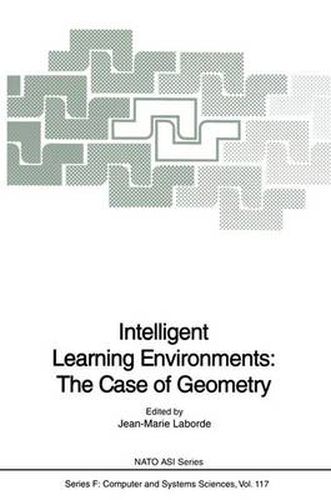Readings Newsletter
Become a Readings Member to make your shopping experience even easier.
Sign in or sign up for free!
You’re not far away from qualifying for FREE standard shipping within Australia
You’ve qualified for FREE standard shipping within Australia
The cart is loading…






This title is printed to order. This book may have been self-published. If so, we cannot guarantee the quality of the content. In the main most books will have gone through the editing process however some may not. We therefore suggest that you be aware of this before ordering this book. If in doubt check either the author or publisher’s details as we are unable to accept any returns unless they are faulty. Please contact us if you have any questions.
This book is a thoroughly revised result, updated to mid-1995, of the NATO Advanced Research Workshop on Intelligent Learning Environments: the case of geometry , held in Grenoble, France, November 13-16, 1989. The main aim of the workshop was to foster exchanges among researchers who were concerned with the design of intelligent learning environments for geometry. The problem of student modelling was chosen as a central theme of the workshop, insofar as geometry cannot be reduced to procedural knowledge and because the significance of its complexity makes it of interest for intelligent tutoring system (ITS) development. The workshop centred around the following themes: modelling the knowledge domain, modelling student knowledge, design ing didactic interaction , and learner control. This book contains revised versions of the papers presented at the workshop. All of the chapters that follow have been written by participants at the workshop. Each formed the basis for a scheduled presentation and discussion. Many are suggestive of research directions that will be carried out in the future. There are four main issues running through the papers presented in this book: * knowledge about geometry is not knowledge about the real world, and materialization of geometrical objects implies a reification of geometry which is amplified in the case of its implementation in a computer, since objects can be manipulated directly and relations are the results of actions (Laborde, Schumann). This aspect is well exemplified by research projects focusing on the design of geometric microworlds (Guin, Laborde).
$9.00 standard shipping within Australia
FREE standard shipping within Australia for orders over $100.00
Express & International shipping calculated at checkout
Stock availability can be subject to change without notice. We recommend calling the shop or contacting our online team to check availability of low stock items. Please see our Shopping Online page for more details.
This title is printed to order. This book may have been self-published. If so, we cannot guarantee the quality of the content. In the main most books will have gone through the editing process however some may not. We therefore suggest that you be aware of this before ordering this book. If in doubt check either the author or publisher’s details as we are unable to accept any returns unless they are faulty. Please contact us if you have any questions.
This book is a thoroughly revised result, updated to mid-1995, of the NATO Advanced Research Workshop on Intelligent Learning Environments: the case of geometry , held in Grenoble, France, November 13-16, 1989. The main aim of the workshop was to foster exchanges among researchers who were concerned with the design of intelligent learning environments for geometry. The problem of student modelling was chosen as a central theme of the workshop, insofar as geometry cannot be reduced to procedural knowledge and because the significance of its complexity makes it of interest for intelligent tutoring system (ITS) development. The workshop centred around the following themes: modelling the knowledge domain, modelling student knowledge, design ing didactic interaction , and learner control. This book contains revised versions of the papers presented at the workshop. All of the chapters that follow have been written by participants at the workshop. Each formed the basis for a scheduled presentation and discussion. Many are suggestive of research directions that will be carried out in the future. There are four main issues running through the papers presented in this book: * knowledge about geometry is not knowledge about the real world, and materialization of geometrical objects implies a reification of geometry which is amplified in the case of its implementation in a computer, since objects can be manipulated directly and relations are the results of actions (Laborde, Schumann). This aspect is well exemplified by research projects focusing on the design of geometric microworlds (Guin, Laborde).